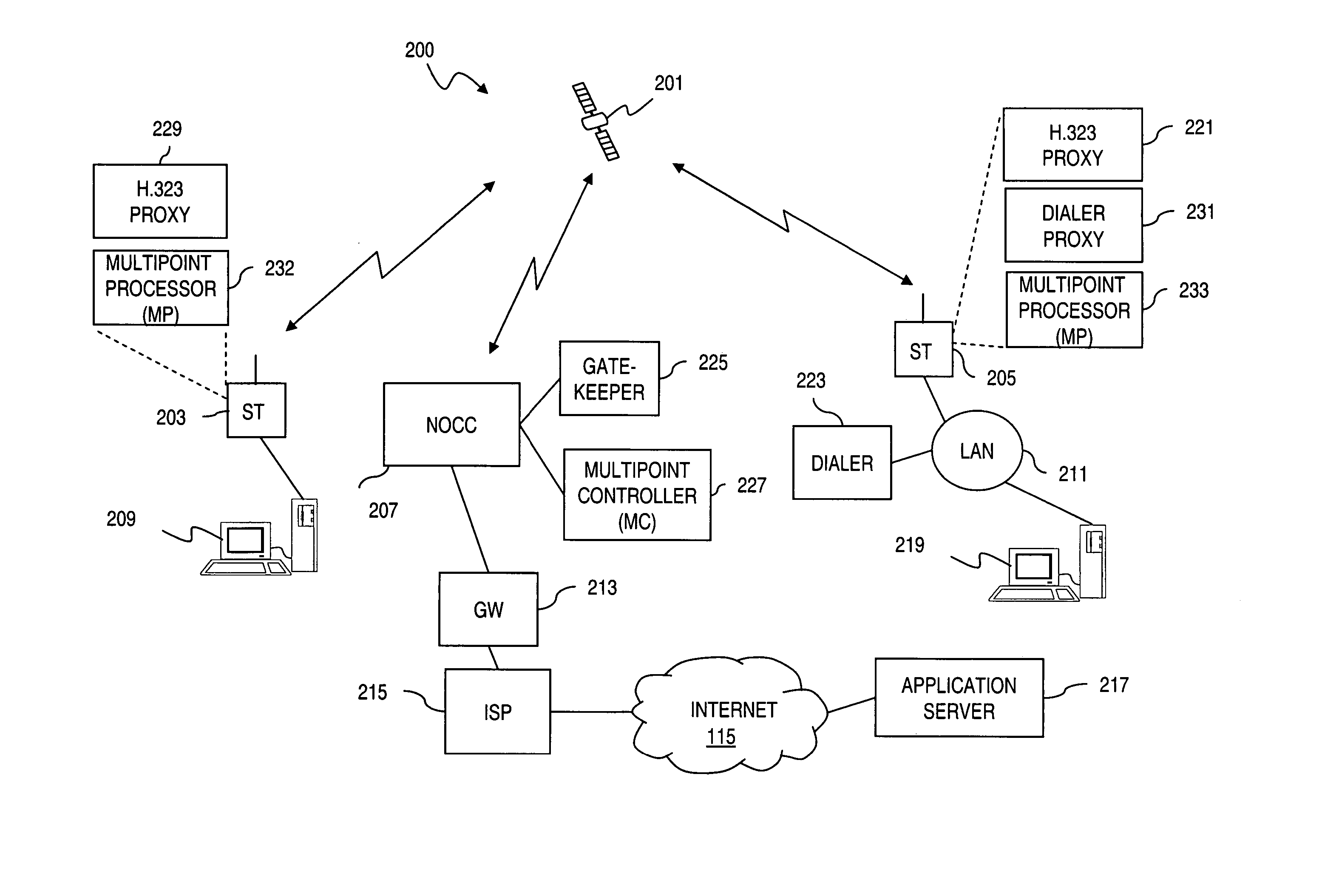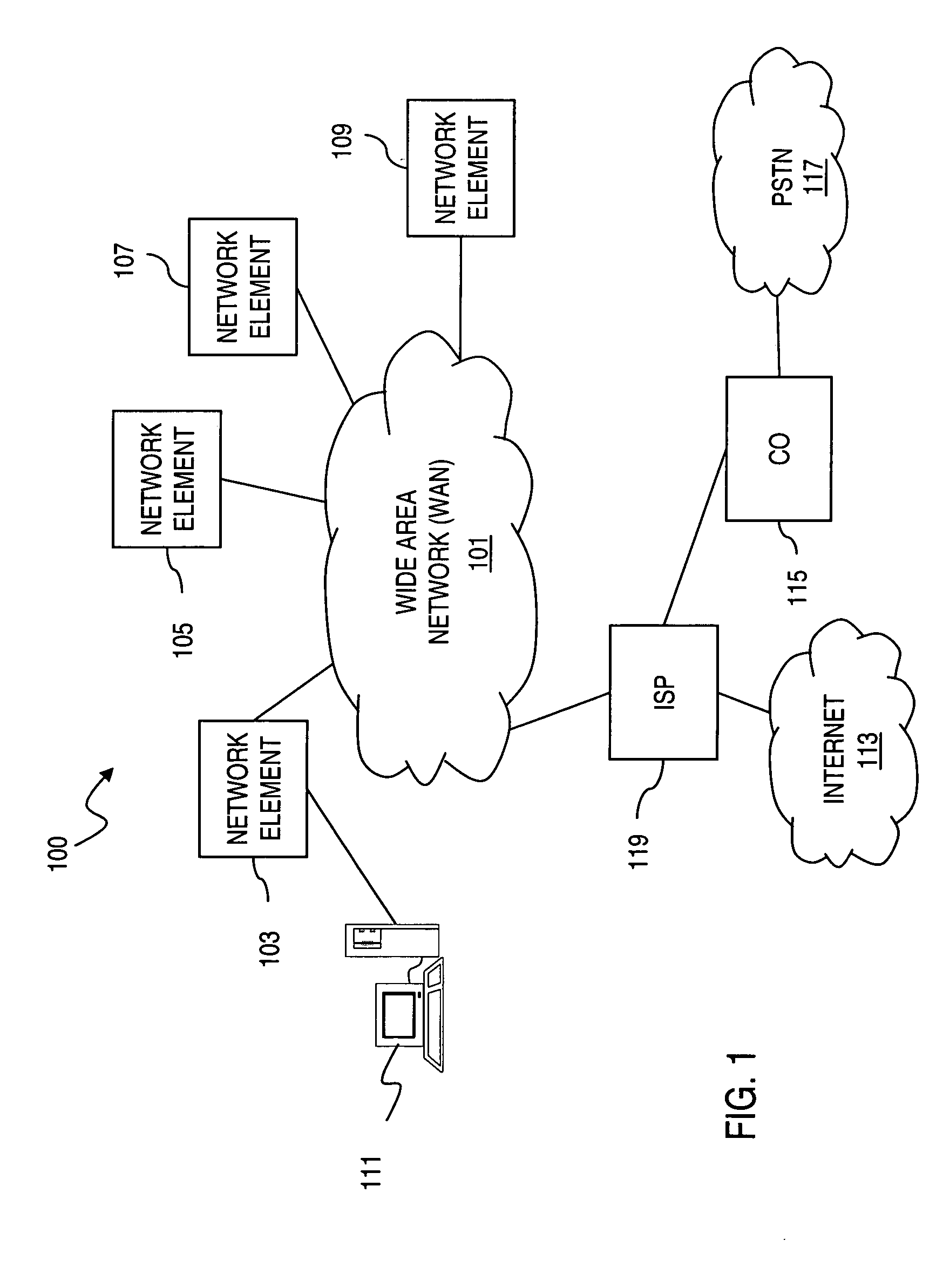Proxy architecture for providing quality of service(QoS) reservations
a proxy architecture and reservation technology, applied in the field of communication system, can solve the problems of unsatisfactory best-effort delivery model, infancy of current approaches to providing qos levels, and enormous strain on network resources, and achieve the effect of minimizing software upgrades
- Summary
- Abstract
- Description
- Claims
- Application Information
AI Technical Summary
Benefits of technology
Problems solved by technology
Method used
Image
Examples
Embodiment Construction
[0032] A system, method, and software for providing quality of service (QoS) reservations in a packet-based communication network is described. In the following description, for the purposes of explanation, numerous specific details are set forth in order to provide a thorough understanding of the present invention. It is apparent, however, to one skilled in the art that the present invention may be practiced without these specific details or with an equivalent arrangement. In other instances, well-known structures and devices are shown in block diagram form in order to avoid unnecessarily obscuring the present invention.
[0033] Although the present invention is described with respect to a satellite communication system that supports data networking, it is recognized by one of ordinary skill in the art that the present invention has applicability to other data networks (e.g., terrestrial networks and radio communication systems). The present invention involves the reservation of res...
PUM
 Login to View More
Login to View More Abstract
Description
Claims
Application Information
 Login to View More
Login to View More - R&D
- Intellectual Property
- Life Sciences
- Materials
- Tech Scout
- Unparalleled Data Quality
- Higher Quality Content
- 60% Fewer Hallucinations
Browse by: Latest US Patents, China's latest patents, Technical Efficacy Thesaurus, Application Domain, Technology Topic, Popular Technical Reports.
© 2025 PatSnap. All rights reserved.Legal|Privacy policy|Modern Slavery Act Transparency Statement|Sitemap|About US| Contact US: help@patsnap.com



